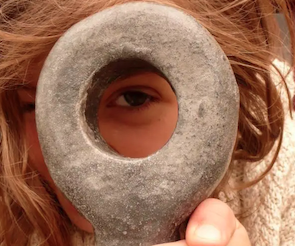(Essay Research)
In recent years music therapy has emerged as an incredibly useful tool in relation to cognitive rehabilitation, particularly for individuals with neurological conditions or injuries, like a stroke. The effectiveness of the therapy all lies in the brain’s neuroplasticity- the brain’s ability to adapt its structure and function in response to experiences throughout life. As mentioned in more detail in my previous blog about Alzheimer’s, music stimulates the brain in multiple different regions, each reacting with a different response. And it’s these distinct responses that makes music an ideal medium for engaging damaged or underused neural pathways in need of rehabilitation.
In cognitive rehabilitation, music therapists use exercises involving rhythm and melody to target specific areas of the brain which then ignite different cognitive skills, such as memory, attention and language. If certain pathways of the brain are damaged from injury or illness, these are the areas that are targeted in the therapy, using different methods to reach the region that needs specific attention. For example, singing and other melodic exercises are able to improve speech in patients with a language disorder, whereas, focusing on rhythm and movement can help retrain motor skills after a stroke.
One of the most impactful aspects of musical therapy is that it engages your limbic system (the area of the brain responsible for emotion)- this involves the; auditory cortex, motor cortex, and the prefrontal cortex. These regions are engaged simultaneously, meaning, the multi-region stimulation increases the formation of new neural connections or reactivate inactive ones. This spark in connections enhances the brain’s ability to recover functions that have been lost due to illness or injury.
Although this particular kind of musical therapy is a rather recent discover and practice in the western medicinal world, there are many cases of sonic healing used within indigenous cultures. Practices that are sacred and have been used for hundreds of years for both spiritual and physical healing.
One example of a physical healing process involving sound comes form the Australian Aboriginal cultures, involving the didgeridoo, a wind instrument that is believed to be over 1,500 years old, traditionally made from eucalyptus trees that have been hollowed out by termites. The process involves this idea of therapeutic vibrations. Low-frequency sound waves are produced when playing the instrument, and it’s the resonant vibrations that are thought to help with deep tissue healing. As well as the physical pain, it is used to heal the body and mind spiritually, often combined with practices aimed at reconnecting individuals to ‘Ancestral Dreaming’, a central cosmological concept in many Australian Aboriginal cultures. It refers to a timeless realm in which ancestral spirits emerged and created the world. The stories, laws, and spirits from ancestral dreaming continue to exist and influence their lives to this day. For many Aboriginal communities, time is not linear and the past, present and future intertwine along with the spiritual world.
It’s clear that musical therapy is a distinct, effective form of healing both the mind and body, and although is something that has only recently been backed up by science in the western world. It is a practice that humans have been using for centuries, each in their own different forms and expressions, but each as powerful as the next. I think often times as a western society people look down upon traditions that involve spirituality as they see it as a kind of nonsense, and because of this, it has stunted our development in healing and helping individuals. However this ignorance should be avoided at all costs as there is evidence of these Indigenous practices working, which are only now being backed up by science.
